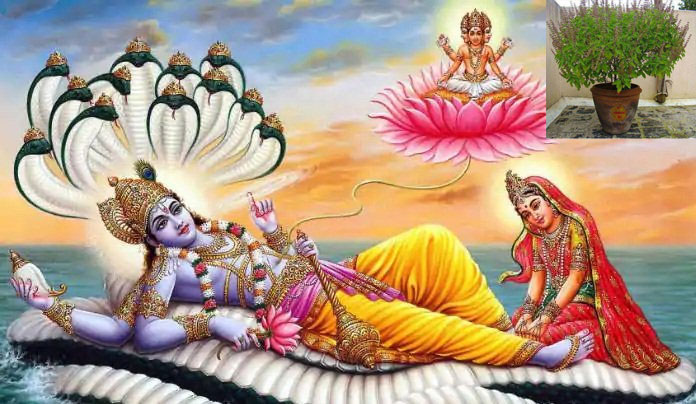
Every year on the day of Ashadh Shukla Ekadashi, a special pooja is performed from house to house for four months. A month ago, on the day of Jestha Shukla Ekadashi, the plants kept in the Tulsi Moth of the house are moved to the Motha today. According to the Sanatan Vedic tradition, Tulsi is considered a symbol of Vishnu.
From today till the day of Kartik Shukla Ekadashi, special worship of Tulsi is done. Prof. Dr. Ram Chandra Gautam, a theologian and former chairman of the Nepal Panchang Judging Committee, says that today is called Harishyani Ekadashi as Lord Vishnu sleeps in the Milky Way for four months from Ashadh Shukla Ekadashi to Kartik Shukla Ekadashi. The four months in which Lord Vishnu sleeps are also called Chaturmasa.
There are 24 Ekadashis in a year. All those who can fast on Ekadashi by eating only fruits. Those who are unable to do so fast on the eight Ekadashis which fall during the four months of Chaturmasa. Those who should be active in work and have not been able to eat fruit for four months, fast on the days of Harishyani Ekadashi and Haribodhini Ekadashi.
Devotees have been flocking to Narayan and Vishnu temples across the country, including Budhanilkantha in the capital and Char Narayan in the valley, since this morning on the occasion of Harishyani Ekadashi. On the day of Ekadashi, especially non-edible bread made from rice, Dhindo, and other fruits are eaten.
Basil, which is also scientifically proven to be high in oxygen, is also used as a medicine for various ailments. It is also believed that poisonous germs that spread the disease do not come to the place where the basil is grown. It is also believed that placing basil in the place where there are architectural defects will bring positive results. The fact that pure air flows in the place where there is basil has also been scientifically confirmed.
Tulsi, which has been worshiped for four months, is married to Damodar on Kartik Shukla Ekadashi, or Haribodhini Ekadashi. After the ritual marriage of Tulsi and Damodar, Havan is also performed for the observance of Chaturmasa Vrat by the method of Agnisthapana.





